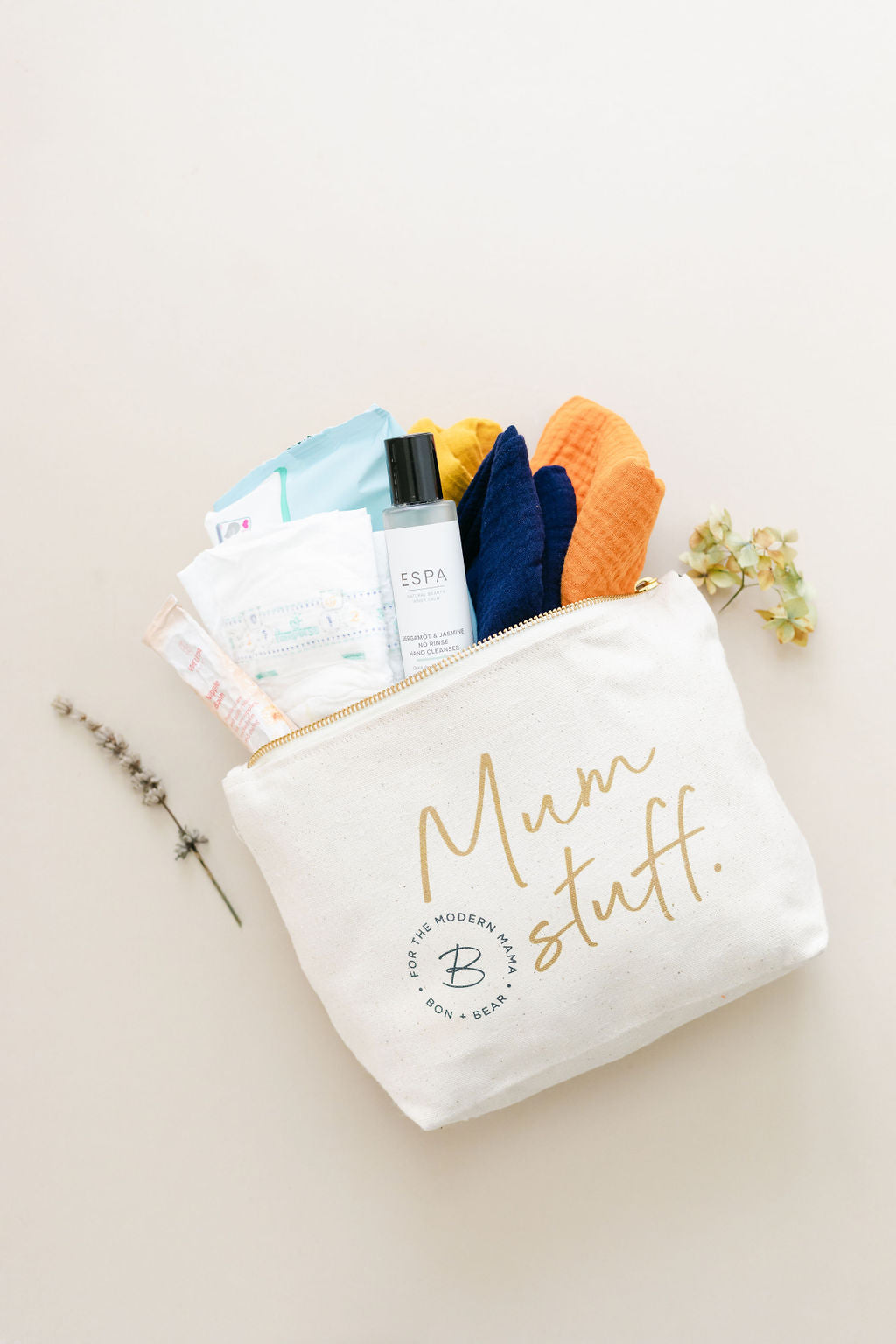
7 common breastfeeding concerns and how to solve them
Rosie Se, Advanced Lactation Specialist at Milk Clinic, shares how to navigate the newborn weeks and how to handle common bumps along the way.
Beginning breastfeeding is a rollercoaster ride taking you through every single emotion a single day. From pure joy to rage, pain, worry, frustration and back to pure bliss again. For some, breastfeeding is seemingly a technical skill that only experts can master, while for others its as simple as latch and go.
Breastfeeding is natural, but natural in the sense of learning to walk rather than taking your first breath. It takes a bit of practice, perseverance, and time. Just like when you begin working out, it may feel hard work at first, but it gets easier the more you keep doing it. The same goes for breastfeeding. It all gets easier with a little bit of practice and time.
Concern #1 How often should my baby be feeding?
In the first few days and weeks after delivery, you have a window of opportunity to lay down the foundations for building a robust milk supply. Think of it as putting in an order at the factory for your future milk production. If your goal is to breastfeed for a year and beyond, these first few weeks are where you need to put in the hard work and feed, feed, feed your baby. Put your feet up, turn on Netflix and settle into your sofa for plenty of skin-to-skin snuggles and feeds. Everything else can wait. This is your time to rest, recover from birth, and for you and baby to focus on figuring out together how to make this feeding thing work. It can feel intense, but it’s a short season that won’t last forever.
Most guidelines advise to breastfeed at least ‘8-12x per 24 hours, every 2-3 hours’. Yet many babies want to nurse more often than this, and that’s absolutely ok! Can he really be hungry AGAIN, he just fed? You bet!
Newborn babies are tiny little things with tiny little tummies. They’re vulnerable and dependent on you, their home and their entire world. Breastfeeding is not just about food - babies need to eat regularly but they want to nurse for connection and comfort too. Think back over your day for a moment. How often did you sip your water or grab a piece of fruit (or ahem, chocolate) after finishing a meal? I’m sure you eat and drink when you feel like it, and don’t restrict your fluid intake to only when the minute hand hits the hour. The same goes for when you’re feeling sad, anxious or lonely. You probably reach to a loved one to respond and expect them to respond. Could you imagine saying to your partner “sorry you’re not due another cuddle until 9 o’clock’?
Concern #2 Should I offer both breasts at every feed?
Yes! A good dinner party host always offers second helpings and dessert. It’s always nice to offer the other side.
Your baby may be satisfied with just one breast, but many babies need to feed from the second side (and may even switch back again – called switch nursing). In the early days while your milk supply is getting established, offering and encouraging active feeding on both sides is recommended.
- At the start of a feed, baby will suck vigorously to signal to your body to let down your milk.
- Once your milk lets down (the milk ejection reflex) you’ll notice that fast sucking switches to a deep and steady ‘suck, suck, swallow’ or ‘suck, swallow, suck’ pattern.
- It’s easiest to see if baby is well latched when their chin is tucked deep in the breast and neck a bit extended.
- You can see swallows at the top of the throat and their chin dip, followed by a brief pause.
- This link has videos that demonstrate just sucking vs. good swallows while breastfeeding: https://ibconline.ca/one-side-or-two/.
When you notice baby’s suck pattern slowing down into fluttery sucks or quivers, they’re no longer actively nursing. If you find she is getting sleepy or mainly sucking, breast massage and breast compressions can make a big difference in keeping her active at the breast and getting in more milk. As baby slows and responds less to stimulation and compressions, now is a good moment to unlatch, wake her up (with burping or change diaper for example) and offer the other side.
If despite your best efforts baby is happy snoozing and uninterested in the other side, there’s no need to worry if their weight gain and diaper output is as expected. As you and baby get to know each other you’ll soon figure out her patterns and preferences.

Concern #3 How much cluster feeding is too much cluster feeding?
Cluster feeds tend to happen during a period each day when babies feed very often.. and by often, that means a lot!
These periods of ‘clustered feeds’ occur during growth spurts, developmental leaps and most often in the evenings when your milk supply is a little lower, everyone is exhausted, and babies are wanting to tank up before bedtime.
Get comfy: you can expect to spend a lot of time glued to the sofa or your favourite chair. If baby is gaining weight with plenty of pees and poops, these frequent feeds and fussy spells are nothing to worry about. It’s a good excuse to settle in and smash the new season of your favourite TV show.
Towards the end of the feed:
- observe when baby has finished actively nursing on the breast
- the deep ‘suck, swallow’ pattern will slip into fluttery non-nutritive sucks
- it’s ok to unlatch baby at this point and give yourself a break!
So when does it all become too much? Breastfeeding needs to be a) effective in transferring milk to your baby, but also b) sustainable for you.
If those ‘cluster feeds’ are turning into overwhelming and continuous constant nursing sessions lasting all day, it may be a sign your baby is not coming away from feeds fully satisfied and content. A baby who keeps falling asleep before finishing a feed, is slow to gain and is only content with a boob in their mouth may not be feeding as well as they could. That’s a good indication breastfeeding needs a bit more close support and it’s time to get some help make sure baby is taking in enough milk.
Concern #4 Should I time my feeds or feed on demand?
Tracking apps and scheduled feeds can seem like a comforting security blanket, especially when we can’t actually see what’s going in. However, they’re often less than helpful. Tempting though it is to record every pee and poop and minute on the boob on our smartphones, these tracking apps are less than helpful, feeding anxiety and adding extra effort for you.
There’s also a fundamental problem with tracking and timing feeds: how long a baby feeds for doesn’t reveal many clues regarding how much milk they’re taking in. A baby may be happily camped out the breast, but not actively feeding. Or they may look latched for the whole time but they fell asleep in the first few minutes and have just been comfort sucking and creating sore nipples in the meanwhile. More minutes do not equal more ml of milk.
Here's where you get to really hone that instinctive motherly intuition and observe how your baby is feeding:
- skin-to-skin cuddles and a supportive baby wrap or carrier will boost your milk making hormones, help you learn her early feeding cues and respond quickly to her signs of hunger
- Milk production is really all about demand and supply: the more milk your baby (or a pump or your hands) remove from the breast, the more milk your body will make
- Breastfeeding is a constant feedback loop
- Allow time for your baby and body to talk to each other, with unrestricted access
- Responsive feeding teaches your baby she’s safe and secure but also ensures her nutritional needs are met
- Scheduling, limiting, or stretching out feeds can drastically reduce your milk supply as it limits opportunities for our baby and our body to communicate
In time, you’ll find those rhythms and routines will naturally fall into place without the stress of enforcing strict schedules. You’ll feel wonderfully self-confident knowing what works for you, your baby and your unique family.
Concern #5 Can I use a pacifier/dummy?
Pacifiers are one of those parenting products that get people’s knickers in a twist. On one side sit cautious counsellors who would rather wait until 4-6 weeks when milk production is better established before introducing a pacifier. You may find ‘crunchy’ moms who call them ‘mother substitutes’ or ‘plugs’ or encounter Auntie Marsha with her classic “she’s just using you as a pacifier!” comment, every time your baby cues to feed.
Let’s find some balance. Firstly, babies don’t use you as a pacifier, they use pacifiers as the breast. Pacifiers are essentially, substitute boobs. Babies have an innate need to suck – it’s comforting, soothing and the best way to stimulate the nipple and send lots of lovely prolactin and oxytocin signals to your body to boost milk production. Your baby loves to comfort suck because it’s soothing, calming and breastfeeding is a wonderful tool in the toolbox that allows them to be beautifully pacified by you.
Using pacifiers can have downsides:
- If used to put off or space out feedings this can run the risk of lowering your milk supply
- Baby may get their sucking needs met by the pacifier and not the breast, preventing necessary and needed stimulation at the breast. T
- pacifier use is also associated with increased risk of ear infections, teeth misalignment and an earlier return of menstrual cycles for exclusive breastfeeding mothers
- for a baby that is gaining slowly, not latching well or for a mom with low milk supply, it may be worth holding off on using the pacifier until breastfeeding is more established.
Having made those disclaimers: this is the 21st century and we don’t live in caves. Sometimes you gotta do what you gotta do! If using a pacifier preserves the breastfeeding relationship (and your sanity) by providing you with relief from the intense needs of your baby or nipple soreness, the benefits may well outweigh any risks. We no longer live in tribes and villages, where you could hand over a fussy baby to a nursing sister, cousin or aunt who would feed your baby for a moment while you took a few deep breaths.
Pacifiers also allow partners, Dads and other helpers (the ones with the useless non-lactating nipples!) to calm and comfort baby too. If you’re a mom who needs to leave baby at nursery or daycare from a few weeks or months old, pacifiers are there to meet that innate infant need to suck. A systemic review and meta analysis published in 2022 https://pubmed.ncbi.nlm.nih.gov/35834044/ concluded that pacifier use is not associated with lower breastfeeding success rates and that introducing pacifiers to preterm newborns can shorten hospitalisation times and transitions to oral feeding.
Pacifier use is a personal decision you get to make for you, your baby and your family!

Concern #6 Why does breastfeeding hurt / am I doing something wrong?
Breastfeeding shouldn’t be painful! Don’t suffer in silence or push through pain!
It’s normal to experience some level of discomfort, peaking around the end of the first week. This shouldn’t be intolerable pain though, and any discomfort should only be noticeable during the first minute or so of the feed before resolving for the remainder of the time. Any ongoing or prolonged pain should be addressed as quickly as possible. Ask for help early, and keep on asking! You are advocating for yourself and baby by seeking out the help you need and deserve. We want to prevent nipple damage and trauma before breastfeeding becomes unbearable.
The number one cause of nipple pain is a shallow latch. Thankfully, small tweaks to positioning and attachment at the breast can make a really big difference.
- a skilled breastfeeding peer support or lactation consultant will be able to help you with techniques on how to get a deep, comfortable latch
- check locally for in-person breastfeeding support groups and baby cafes
- many organisations offer virtual groups online so you can get help with latching without ever leaving the house
- a simple sear online brings up countless videos on how to achieve a deep latch: some favourites are Global Health Media, Natural Breastfeeding by Nancy Mohrbacher and Carla Mastrioni’s video demonstration of getting a deep latch.
And remember, if someone look at the latch and says ‘it looks good’ but it doesn’t FEEL good – that’s not good enough! If breastfeeding isn’t comfortable, there are still some adjustments that can be made to help you breastfeed without pain and soreness.
Concern #7 How do I know if baby has a tongue tie?
Tethered oral ties or ‘tongue tie’ (ankyglossia) refer to a short, tight or restricted lingual frenulum (the fleshy band beneath the tongue that tethers it to the floor of the mouth). Tongue ties should be diagnosed by an appropriately trained healthcare professional who performs a proper functional assessment of tongue movement and restriction, not just glancing in the baby’s mouth and looking at its visual appearance.
Restricted tongue function and movement can impact baby’s ability to get a deep latch and remove enough milk. Some signs and symptoms of a tongue tie include:
- Nipple pain and discomfort
- Bobbing on and off the breast
- Clicking sounds
- Slipping off the breast and breaking suction
- Choking
- Difficulty managing flow
- Reflux, fussiness
- Dribbling milk
- Slow weight gain
An assessment will consider tongue movement from side to side (lateralisation), tongue tip appearance, attachment to the low gum ridge, tongue protusion (extension) and lift (elevation). Ideally the assessment should take place with a feeding observation by an infant feeding specialist who can observe how the tongue is functioning and working to transfer milk. An infant feeding specialist can also help work with you to find ways to help improve feeding and comfort while waiting for a revision.
In the UK, you can search for a registered practitioner with the Association of Tongue Tie Practitioners here.
If you’re struggling with any aspect of motherhood or breastfeeding, reach out for help. It’s never a sign of weakness to ask for help. You are advocating for yourself and your baby! If you don’t get the help you need and deserve, ask again and keep on asking until you do. The earlier you seek help, the better!
Rosie
-
For more tips and support follow @milk.clinic on Instagram and facebook.
You can also book a virtual consultation online at https://www.milkclinic.com

